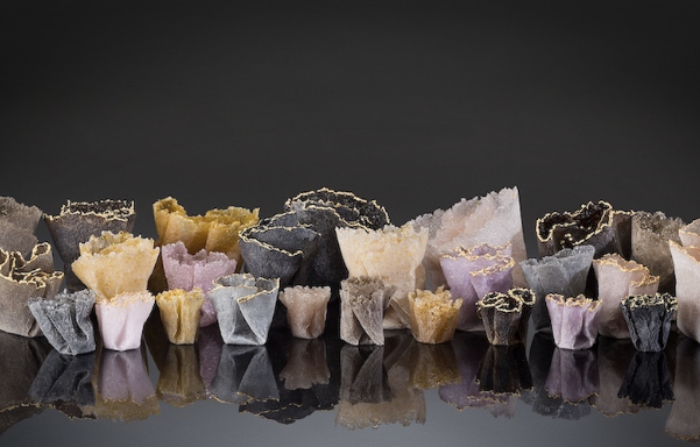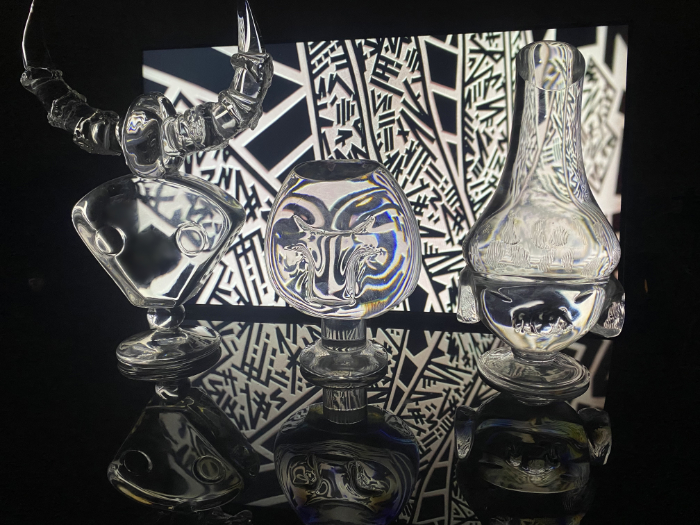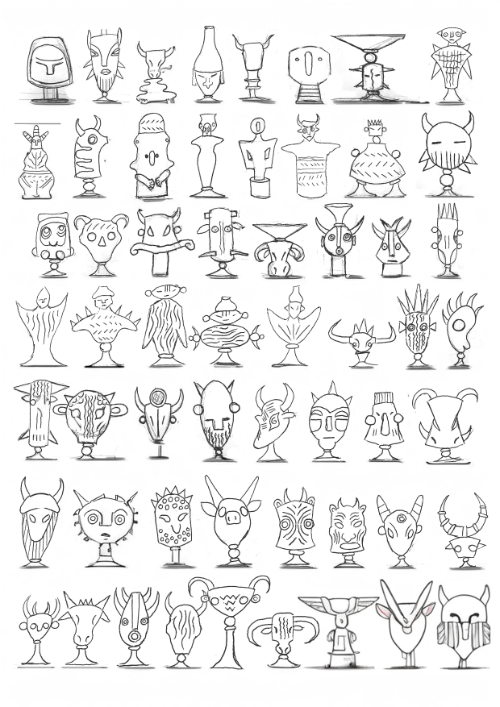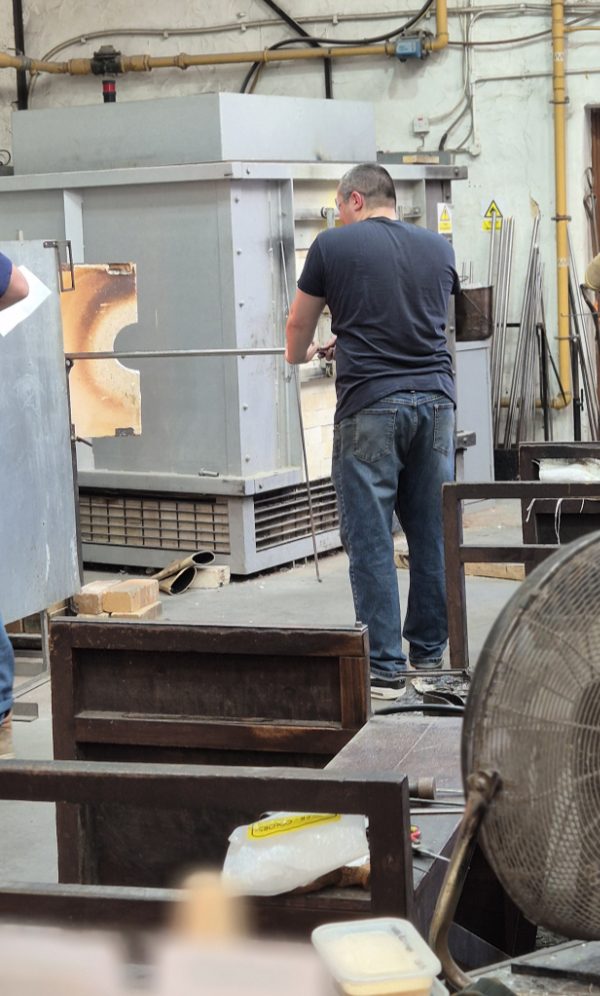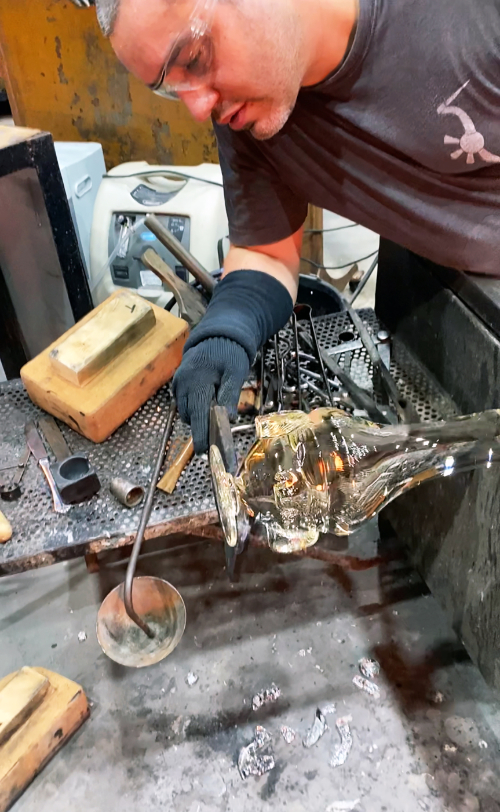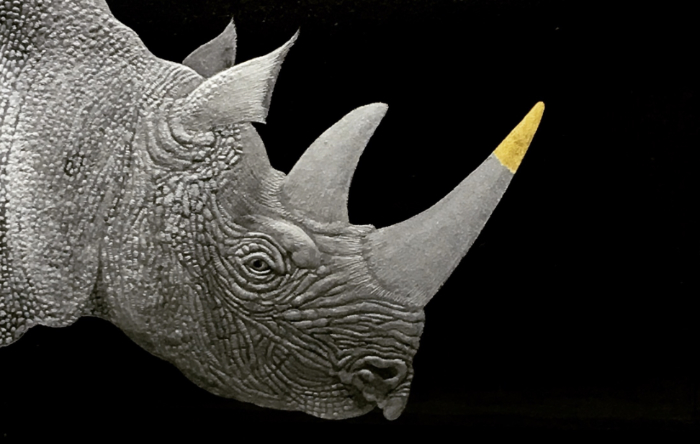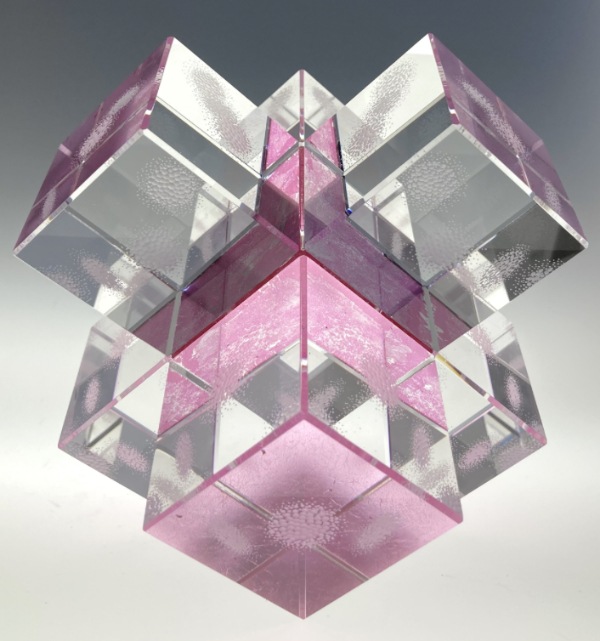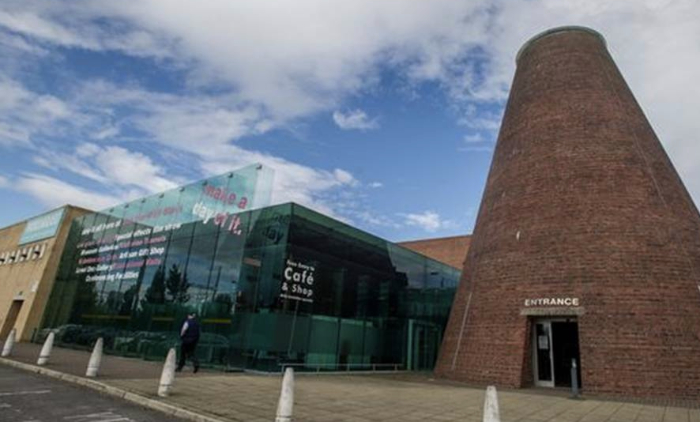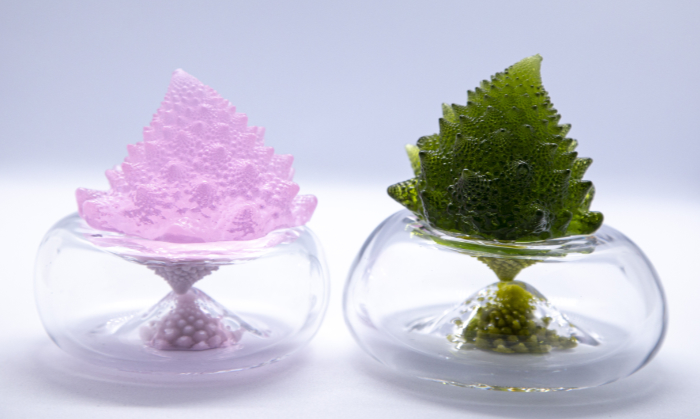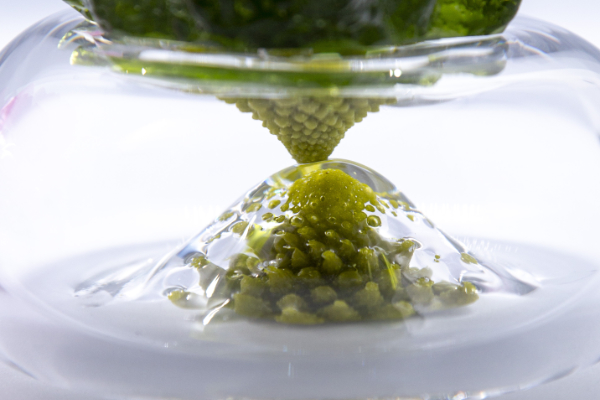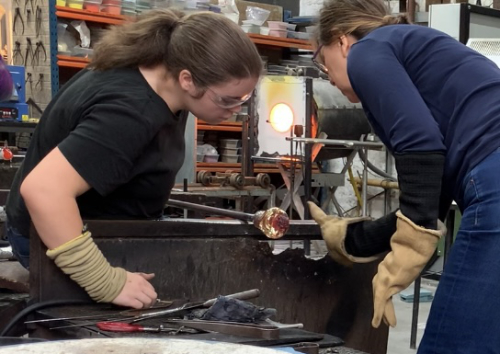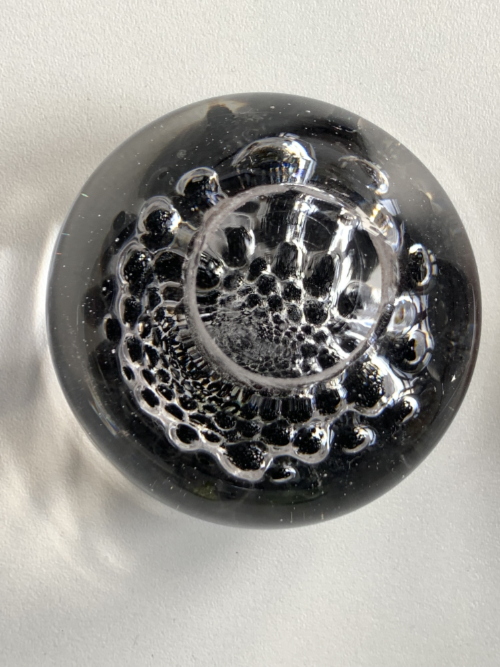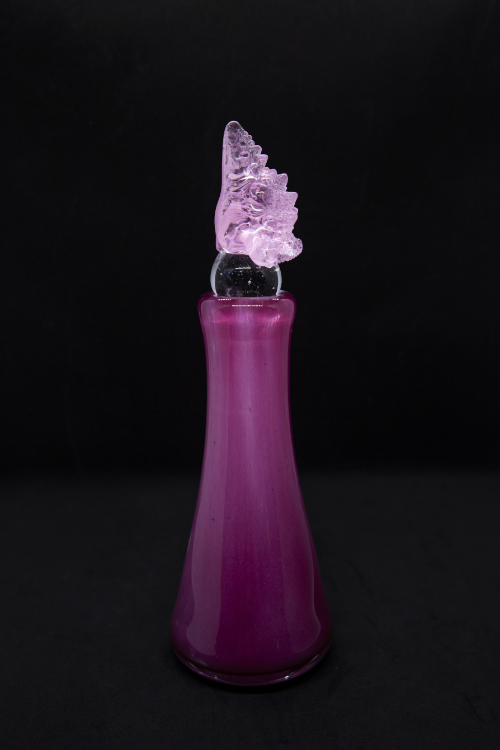Contemporary Glass Society (CGS) Chair Sarah Brown looks back on the many highlights of the joint symposium held in September.
Wow! What a brilliant time we had at ‘Glass in Wales’, the CGS and British Society of Master Glass Painters’ (BMSGP) symposium on 13 September 2025 at Aberystwyth Arts Centre.
First, I would like to thank the Aberystwyth Arts Centre, for kindly hosting us for the day, and to Linda Norris for organising the event, and the support of BMSGP, and the artists who spoke.
Linda Norris spoke of her practice – how she has been a painter for many, many years, and has expanded her approach to incorporate varied materials and techniques. She explained how she initially learned about glass from Steve Robinson, then developed her own way of working in glass with no formal education. This self-taught and experimental approach offered fun and freedom with no rules, or stipulated path.
She reflected on how glass is a great medium for her analysis and inquiry – as it slows her down. In the time it takes to set up a casting, or waiting for the kiln to fire, “you have time to think, to reflect,” she explained. This is unlike working with paint which can be fast and ever-developing, without the need to just wait.
Even with the notion of needing to slow down, the vast range of work she has created in glass and the numerous community-based projects she has completed certainly do not reflect this reduced pace! Working with Rachel Phillips on some incredible stained-glass projects, she has won both the Art and Poetry Prize, and The Warm Glass Prize for her piece Her House is Air. It was an inspiring talk, and I look forward to seeing where her work goes next!
Next, we had a series of Pecha Kucha’s – these invited makers and artists to present on their practice to the room, in a short space of time. Jacqui Fowler, Mel Montgomery-Johnson and Alison Stott all spoke of their love of working with glass, each having had a major shift within her practice in recent years. From starting over and discovering glass fairly recently, and finding confidence and joy in life, too, to deciding to put their own ideas and concepts first for a change. Talks focused on what glass meant to each artist, explored the relationship between science and glass, and on finding their own language within their work to collaborate and explore new directions.
Rebecca Bingham from BMSGP, spoke of all the things that the society does, the extensive library (which as a member you can access), the visits to extraordinary stained glass in a variety of locations, and the development and encouragement of emerging and established artists working in glass.
We then broke for lunch and explored the Arts Centre, visiting the ceramic collection where Linda Norris has a temporary display of her work called ‘ReMade’, which is a combination of glass and ceramics. We also viewed the ‘From Ceramics to Sound’ exhibition and enjoyed lots of chatting too!
In the afternoon we kicked off with a presentation by Verity Pulford, who shared her inspiring journey plotting the development of her work to date. She discussed how she has received funding, which is not always a smooth path, whilst acknowledging that with this often-unknown path come opportunities and great development.
She also spoke of her unease at being an artist: “I’m always striving to prove I’m good enough.” This was a common thread throughout the day’s talks, something that being a creative often stirs within us, namely the need to strive for better, the need to work on bigger projects, to get into bigger and better galleries. But thankfully within that unease Verity has not lost the need for finding joy in what she does. She comented, “the honesty of play keeps me so excited.” I think you can see this key element within her work, and it was so lovely to hear her describe her exploration as play, and how with that childlike excitement such development in her research can shine through.
Catrin Jones was our final speaker of the day, sharing her journey from the early days of working in architectural settings, to the modern day. She bought along some brilliant samples of her work and discussed the various processes adopted when working on a large scale. Challenges included working with the complexities of buildings that are still in a state of progress and being able to visualise and realise the end results before you can really see the space.
After her talk we went on to visit her most recent commission at The Leri, in Bronglas Hospital. Being able to visit a space like this was incredibly special. It is not often that you can hold a tour in a hospital, and hear about the process, and inspiration behind a new artwork. We would like to thank the nurses at the unit who made this possible.
Overall, it was a remarkably busy day, with so much to take in, and so much more that people wanted to immerse themselves in – we could have been there until midnight! So, I do hope this little synopsis demonstrates what a brilliant day we had, and I hope it inspires you to attend the next one!
Our next event will be at the Victoria and Albert Museum in London, on Friday 5 December 2025, where we will be hosting ‘Glass Narratives: An Artist’s Perspective’.
I look forward to you joining us there! More information and tickets via this link.
Image: Jacqui Fowler presenting at the Pecha Kucha. Photo: Sarah Brown.
